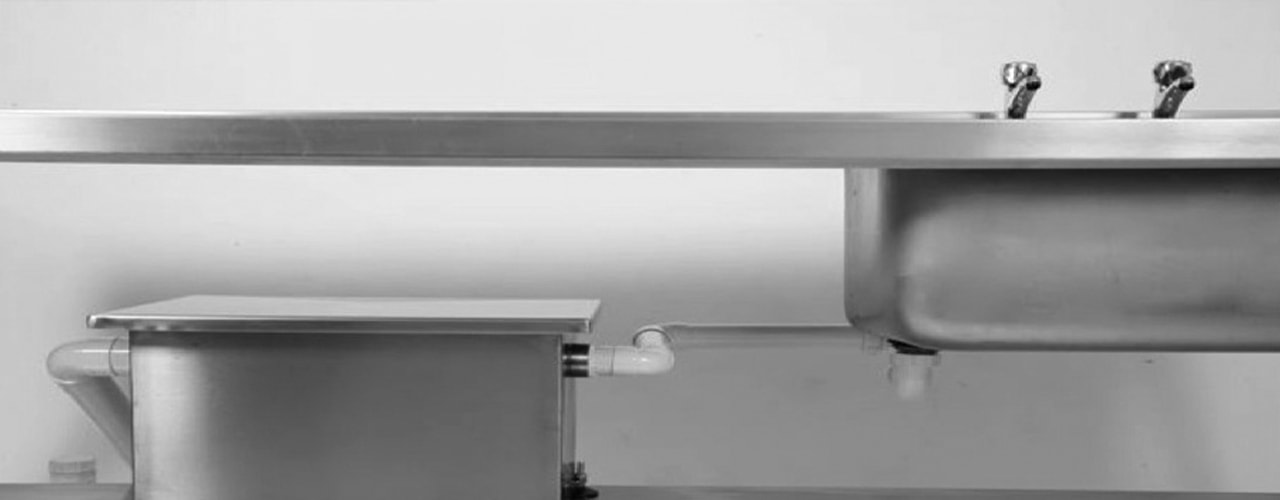Commercial Kitchen Grease Traps (GT) & Grease Interceptors (GI)
Installation & Repair
Are you looking for a company that specializes and understand the necessities of installing, repairing and servicing both grease traps and interceptors? Grease Management Solutions one stop shop for all your commercial kitchen grease trap and grease interceptor needs. From installation to cleaning, we are here to help you get the best prices and service in Alhambra, California.
Why Do I Need A Grease Trap or Grease Interceptor?
Both units are designed to significantly reduce the amount of Fats, Oils, Grease and Solids waste from entering the city sanitary lines. Due to a large increase in food servicing establishments (FSE), it has had a negative effect to the city sewer sanitary lines causing it to overflow. For this reason, Alhambra is making it mandatory for all restaurants and other food servicing establishments (FSE's) to install a grease trap or grease interceptor in order to operate.
Traps vs Interceptors
What is Better?
Both units have similar functionality and that is to trap the FOGS waste and prevent it from entering the city sewer lines. The major differences between the devices are its size, grease traps are small and typically found inside the kitchen with an average size of 50 gallons or below. On the other hand, grease interceptors are larger units ranging from 750 gallons up to 5,000 gallons for a normal size commercial kitchen.
Before installing any unit, it is important to consult with the city of Alhambra in regards to their requirements. Majority of the time, cities will make it mandatory for businesses to install outdoor grease interceptors because of the effectiveness versus small indoor grease traps. With traps only being able to hold a small fraction compared to GI's, it's effectiveness of capturing FOGS waste is not as efficient.
Cost to Install an Indoor Grease Trap
There are 2 types of grease trap: mechanical and hydro mechanical. Mechanical grease traps, are designed to self clean the grease on a daily basis which is why they are highly suggested by the city rather than a hydro mechanical. Therefore, mechanical units can range from $3,000 up to $10,000 depending on the size of the unit you are going to be putting in. On the other hand, hydro mechanical grease traps are far less expensive ranging from $500-$1,500 because it doesn’t have any motors that will skim the grease daily; instead it has to be cleaned manually on a daily basis by skimming the grease on top. Though, both units are suggested to be cleaned fully removing all content at least once every 2-4 weeks to prevent heavy settled solids build up especially with the mechanical traps because it can interfere with the motor.
Outdoor Grease Interceptor Installation Cost
The price of a grease interceptor (GI) itself ranges from $3,500 to $8,500 for an average commercial kitchen. The majority of the cost for installing a grease interceptor labor cost. Interceptors are usually found outside parking lot buried beneath the ground most of the time. Although, these units can be costly to put in versus a grease trap they require less maintenance and are more efficient in intercepting FOGS waste which is why cities within Southern California favor these units versus small indoor grease traps.
Grease Trap Repair
If you grease trap is leaking and have a substantial amount of corrosion, it is most likely time to replace the trap rather than patching it up. Since waste water entering grease traps have high acid content over time metal traps will corrode and eventually leak. We highly suggest that if your trap is corroded, to replace it with a thermo plastic grease trap to eliminate any corrosion.
Interceptor Baffle Repair
Baffles (T-PIPE) inside the grease traps are typically glued in which over time can wear out because of the high acid water that goes into the system. These baffles are designed to stop grease from reentering the main grease plumbing line which can stop the water from entering the GI. It is important that when putting back a baffle T – Pipe that the device is to be completely pumped out before entering the interceptor. Please note that person entering the interceptor must have the proper equipment and tools because of the dangers of the toxic gas that is present. This should never be done by non professional and failing to take the proper precaution can lead to death. (HIRE A PROFESSIONAL)
Related Topics
Grease Trap Odor
Odors from these devices can be very unappealing to customers and it is important that when these odors occur to immediately find a solutions to make it go away. If you have ever opened a grease trap or grease interceptor, you are aware of the foul odor that it can release. Since FOGS devices are designed to trap food waste and over time the waste inside will rot causing a bad stench. To prevent these devices from discharging a awful aroma it is one of the most important solutions is to clean your grease trap regularly. Cleaning or pumping your grease trap regularly can help relieve the odor by removing all the decayed grease waste inside the piece of equipment. If you have recently cleaned or pumped your grease trap or grease interceptor and are still experiencing a dreadful stench, we would highly suggest checking the plumbing and ventilation to ensure that there are no problem. Call us today and let us help you find a solution to eliminate the bad odor from your FOGS device.
Grease Pumping Service
Grease interceptors and grease traps are most effective when they contain less than 25% fats, oils, grease and solid content to stay in compliance. On average indoor grease traps are typically cleaned every 2-6 weeks and grease interceptors will vary from 3-6 months. Failing to clean your traps on a timely manner can lead to citations, plumbing and odor issues. Call our office today to schedule a pumping service at 888-696-9906.

